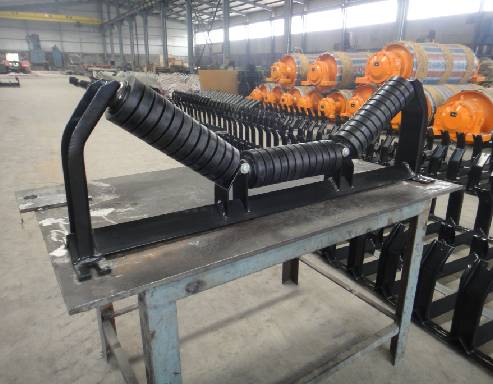 Afrikaans
Afrikaans  Albanian
Albanian  Amharic
Amharic  Arabic
Arabic  Armenian
Armenian  Azerbaijani
Azerbaijani  Basque
Basque  Belarusian
Belarusian  Bengali
Bengali  Bosnian
Bosnian  Bulgarian
Bulgarian  Catalan
Catalan  Cebuano
Cebuano  Corsican
Corsican  Croatian
Croatian  Czech
Czech  Danish
Danish  Dutch
Dutch  English
English  Esperanto
Esperanto  Estonian
Estonian  Finnish
Finnish  French
French  Frisian
Frisian  Galician
Galician  Georgian
Georgian  German
German  Greek
Greek  Gujarati
Gujarati  Haitian Creole
Haitian Creole  hausa
hausa  hawaiian
hawaiian  Hebrew
Hebrew  Hindi
Hindi  Miao
Miao  Hungarian
Hungarian  Icelandic
Icelandic  igbo
igbo  Indonesian
Indonesian  irish
irish  Italian
Italian  Japanese
Japanese  Javanese
Javanese  Kannada
Kannada  kazakh
kazakh  Khmer
Khmer  Rwandese
Rwandese  Korean
Korean  Kurdish
Kurdish  Kyrgyz
Kyrgyz  Lao
Lao  Latin
Latin  Latvian
Latvian  Lithuanian
Lithuanian  Luxembourgish
Luxembourgish  Macedonian
Macedonian  Malgashi
Malgashi  Malay
Malay  Malayalam
Malayalam  Maltese
Maltese  Maori
Maori  Marathi
Marathi  Mongolian
Mongolian  Myanmar
Myanmar  Nepali
Nepali  Norwegian
Norwegian  Norwegian
Norwegian  Occitan
Occitan  Pashto
Pashto  Persian
Persian  Polish
Polish  Portuguese
Portuguese  Punjabi
Punjabi  Romanian
Romanian  Russian
Russian  Samoan
Samoan  Scottish Gaelic
Scottish Gaelic  Serbian
Serbian  Sesotho
Sesotho  Shona
Shona  Sindhi
Sindhi  Sinhala
Sinhala  Slovak
Slovak  Slovenian
Slovenian  Somali
Somali  Spanish
Spanish  Sundanese
Sundanese  Swahili
Swahili  Swedish
Swedish  Tagalog
Tagalog  Tajik
Tajik  Tamil
Tamil  Tatar
Tatar  Telugu
Telugu  Thai
Thai  Turkish
Turkish  Turkmen
Turkmen  Ukrainian
Ukrainian  Urdu
Urdu  Uighur
Uighur  Uzbek
Uzbek  Vietnamese
Vietnamese  Welsh
Welsh  Bantu
Bantu  Yiddish
Yiddish  Yoruba
Yoruba  Zulu
Zulu belt conveyor idler design
Belt Conveyor Idler Design Principles and Considerations
Belt conveyor systems are integral to many industries, facilitating the efficient transport of materials over varying distances and terrains. Among the critical components of these systems are the idlers, which play a vital role in supporting the conveyor belt and ensuring smooth operation. The design of belt conveyor idlers is essential for enhancing system performance, extending the life of the conveyor, and minimizing maintenance needs. This article discusses the fundamental principles and considerations involved in the design of belt conveyor idlers.
Understanding Idlers
Idlers, also referred to as rollers, are cylindrical components installed along the length of a conveyor belt. They support the belt's weight, aid in belt alignment, and reduce friction, which is crucial for efficient operation. Idlers are typically categorized based on their functions, including carrying idlers, return idlers, and transition idlers. Each type serves a specific purpose and must be designed accordingly to ensure optimal performance in the conveyor system.
Key Design Principles
1. Load Capacity
One of the primary considerations in idler design is load capacity. The idler must support the weight of the conveyor belt and the materials being transported. To calculate the required load capacity, designers must consider factors such as the belt width, the bulk density of the materials, and the maximum load per unit length. Selecting an appropriate material for the idler and ensuring adequate structural integrity is essential to avoid failure under load.
2. Roller Diameter
The diameter of the idler roller directly affects the belt's performance. Larger diameter rollers generally reduce belt flexing, leading to less wear and tear. However, larger rollers can also add weight to the conveyor system, impacting its overall efficiency. Designers must strike a balance between roller size and the specific needs of the application, ensuring that the chosen diameter promotes longevity while maintaining ease of movement.
belt conveyor idler design

The distance between idlers—known as the center distance—plays a pivotal role in the design of a conveyor system. An optimal center distance helps maintain belt tension and facilitates a smooth belt operation. Designers must consider the conveyor's overall length, the weight of the material being transported, and the operational speed to determine the appropriate spacing between idlers.
Material Selection
The choice of materials for idlers is crucial to their durability and performance. Common materials include steel, plastic, and rubber. Steel idlers are favored for heavy-duty applications due to their robust nature, while plastic may be used in lighter applications for its resistance to corrosion and lower weight. The surface finish of the idler is also important; a smooth finish can reduce friction and minimize wear on the belt.
Environmental Considerations
The working environment can significantly influence idler design. Idlers used in harsh conditions, such as extreme temperatures, wet environments, or in the presence of chemicals, need to be designed to withstand these challenges. Corrosion-resistant coatings, sealed bearings, and specific material choices can enhance the longevity of the idlers in adverse conditions.
Maintenance and Accessibility
Ease of maintenance is another key aspect of idler design. Idlers should be designed for easy access to facilitate regular inspections, lubrication, and replacements. Regular maintenance helps prevent failures that can lead to costly downtimes. Features like removable end caps for bearings and easy-to-replace components can enhance the design, making it more user-friendly.
Conclusion
The design of belt conveyor idlers is a multifaceted process that requires careful consideration of various factors, including load capacity, roller diameter, center distance, material selection, environmental conditions, and ease of maintenance. By focusing on these key principles, engineers and designers can create idler systems that enhance the efficiency and longevity of conveyor systems. As industries continue to evolve and demand more from their logistics and material handling systems, advancements in idler design will play a significant role in optimizing operations and increasing productivity.
-
Revolutionizing Conveyor Reliability with Advanced Rubber Lagging PulleysNewsJul.22,2025
-
Powering Precision and Durability with Expert Manufacturers of Conveyor ComponentsNewsJul.22,2025
-
Optimizing Conveyor Systems with Advanced Conveyor AccessoriesNewsJul.22,2025
-
Maximize Conveyor Efficiency with Quality Conveyor Idler PulleysNewsJul.22,2025
-
Future-Proof Your Conveyor System with High-Performance Polyurethane RollerNewsJul.22,2025
-
Driving Efficiency Forward with Quality Idlers and RollersNewsJul.22,2025





























